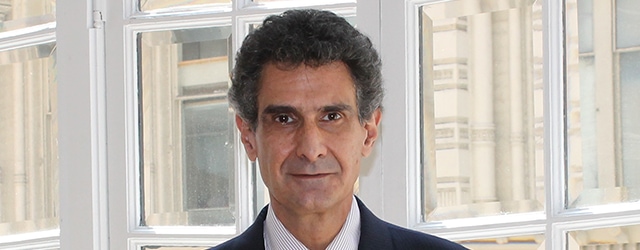Global Finance editors sat down with this month's Salon guestRafael Elias, director of Latin America research at Exotix Capital, to discuss the economic outlook for the region and Mexico’s prospects under new leadership.

Global Finance: How would you describe Latin America and its economy to a global investor?
Rafael Elias: I used to say that there is always going to be a country that has some kind of crisis—and where eventually you can take advantage of it. Before, it was Brazil, with the bust of the real. Now, it might be Mexico, if this transition period proves to be contentious. I do not think it will, but it could. The way I describe Latin America is that there’s always something going wrong in one of the countries.
GF: What interesting changes do you see?
Elias: Argentina had been the darling of the region, but that stopped as the central bank had to raise rates to more than 40%. New investments are coming out of Argentina and migrating to Brazil. The reason is that in the pool of candidates that have declared their intention to run in [Brazil’s] October elections, few are radical. They all are in favor of privatization and pension-system reform. This is giving a lot of confidence to investors, and that is why we see capital coming out of Mexico or Argentina and going into Brazil.
GF: What’s your perspective on Chile?
Elias: They like to say it is the Switzerland of Latin America. They have shown through the decades—regardless of having a right or left government—that they are always going to be prudent and have very good management of the economy. They have very strong economic support in the pension system, which is very large and provides a lot of funding alternatives for different government projects. The problem with Chile is that it is too small for many investors and there aren’t so many opportunities where people can put their money.
GF: Any other country that could present positive surprises?
Elias: I think that Colombia is one of the countries that is going to surprise the markets positively in terms of economic growth going forward. Investment is going to start flowing as investors see Colombia as a safe haven—along with Peru, which is the other Andean market that looks stable, with good economic management and a pro-business approach to regulation policies.
GF: What kind of growth do you see for Mexico after President-elect López Obrador takes over in December?
Elias: One element likely to trigger economic growth will be spending on infrastructure. [López Obrador] has mentioned a tourism train that goes through the Yucatán Peninsula, linking all the different archaeological sites, [and] a high-speed train from Mexico City to Monterrey. Another one is a train and highway that would cross the isthmus to join the Pacific Ocean to the Atlantic and create an alternative to the Panama Canal.
I think that he is not focusing enough on education, however, which would be a trigger for higher economic growth. I see economic growth continuing at these levels. I don’t see any major change.
GF: What’s most relevant to international investors?
Elias: The energy sector is where we see the most concern among business owners. Mexican oil production has been coming down from around 3 million barrels a day a few years ago to less than 2 million barrels a day today. Oil exploration and production should be a priority. During his campaign, López Obrador presented plans to refurbish old refineries and build a new one, but refining is a much less profitable business than production. The big question is whether he is going to continue with energy reform or if he is going to try to reverse it—or if he is just going to stop any further [oil & gas rights] auctions.
My personal opinion is that once he actually meets with the people from the hydrocarbons commission, the people in Pemex, he is going to realize that Pemex is very important to public finances. It contributes 20% to 30%, probably, for the federal budget.



